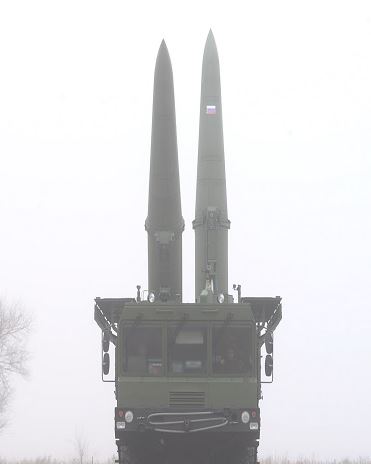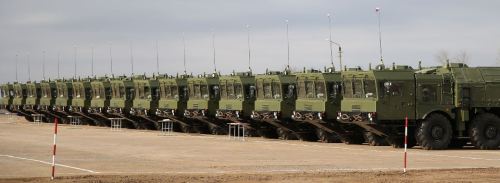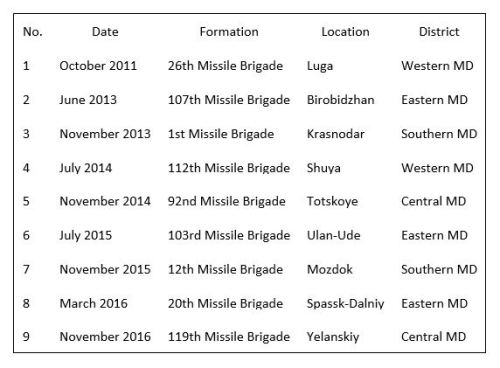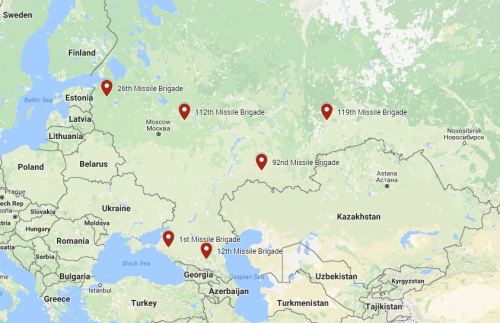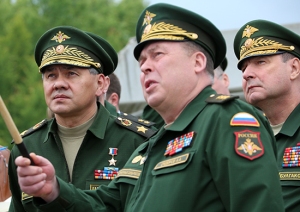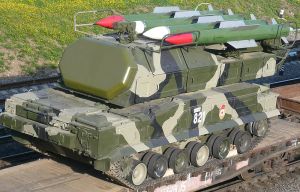Russia may view the Iskander-M as an effective weapon against high-value ships and aircraft carriers in particular. There is, however, no openly available information indicating the Russians have actually tested it as an anti-ship ballistic missile.
In late July and early August, the Russian Army conducted two exercises for the first time featuring notional launches of the land-based mobile 9K720 Iskander-M (SS-26 ‘Stone’) short-range ballistic missile (SRBM) against ships in the Black Sea. Reports on the drills appeared on Mil.ru and government-controlled newspaper Rossiyskaya gazeta.
The 1st Missile Brigade of the Krasnodar-based 49th Combined Arms Army departed garrison in late July for combat readiness drills under the personal control of Southern Military District commander Colonel General Aleksandr Dvornikov. The brigade performed the Iskander-M launch drills at some point before they were reported on July 27 and August 2 respectively.
The MOD press-releases stated that the Russian forces “delivered an electronic missile strike on notional enemy ships and shore facilities” and conducted “electronic launches on notional enemy targets detected in the Black Sea and ashore.”
An “electronic” launch likely means a field combat simulation where the missile unit prepares and performs all procedures for a real-world launch without firing a live missile.
Exactly which ships the Russians used as notional targets for the Iskander-M is unknown. However, the annual NATO Sea Breeze exercise took place in Black Sea waters during mid-July. Forces from 13 alliance members as well as Georgia, Moldova, Sweden, and Ukraine participated in the multinational training. Tensions between Russia and Ukraine remain high since Moscow seized Crimea and sent forces to fight in eastern Ukraine in 2014.
The Iskander-M has the capability to attack moving targets including ships. Its 9M723 missile flies a low, semi-ballistic trajectory at Mach 6-7 with possible maneuvering in the terminal flight stage. It has inertial navigation as well as active radar or electro-optical terminal guidance. Active radar would be employed against ships at sea. However, a successful SRBM strike on a moving naval target would likely also depend on real-time inputs and updates from space-based surveillance and intelligence systems.
The deployment of the Iskander-M as a possible anti-ship system comes just months after Russian President Vladimir Putin unveiled the Kh-47M2 Kinzhal air-launched ballistic missile. The Kinzhal uses a modified Iskander-M missile and has also been advertised as an anti-ship weapon and “carrier killer.”
Compared to the relatively long-range Kinzhal, the 500-km declared range of the Iskander-M makes it less threatening to foreign aircraft carriers and battle groups which could remain outside its reach. However, combined with existing sea- and land-based anti-ship cruise missile systems, Iskander-M’s hypersonic speed would be a major contribution to Russia’s robust anti-access/area denial strategy on the approaches to its four fleet areas.

